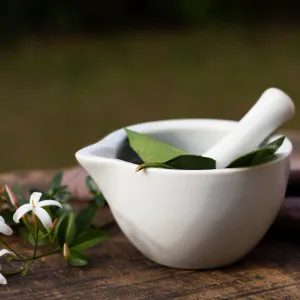

Our Review Process
Our articles undergo extensive medical review by board-certified practitioners to confirm that all factual inferences with respect to medical conditions, symptoms, treatments, and protocols are legitimate, canonical, and adhere to current guidelines and the latest discoveries. Read more.
Our Editorial Team
Shifa Fatima, MSc.
Author
Dr. Apoorva T, MHM.
MEDICAL ADVISOR
Hemoglobin and Diabetes
Haemoglobin (Hgb or Hb) is a protein found in red blood cells (RBCs). It transports oxygen to the body tissues from the lungs and returns carbon dioxide to the lungs. Haemoglobin consists of four interconnected protein molecules (globulin chains).
Haemoglobin also maintains the structure of RBCs. RBCs are spherical with narrow cores, like a doughnut without a hole in the middle in their normal state. As a result, abnormal haemoglobin structure can disturb red blood cell formation, obstructing their activity and circulation through blood arteries.
Diabetes causes many other diseases. The most common question asked by people with diabetes is, “does diabetes cause haemorrhoids?” Well, the answer is yes. The more imbalance of sugar in your diet, the higher the chance of you being constipated, which over time can result in haemorrhoids. In this blog we will discuss how to increase haemoglobin. Also know about jaggery vs brown sugar
Table of Contents
Can Diabetes cause Low Haemoglobin?
Hypoglycaemia (diabetes) and anaemia (low haemoglobin) are two separate illnesses with certain symptoms in common. Low blood sugar is referred to as hypoglycaemia, whereas anaemia develops when the body's red blood cells are insufficient to transport oxygen. If you suffer from diabetes, your body cannot properly digest and utilise glucose obtained from your diet. Hypoglycaemia is the most common symptom of diabetes. There are various varieties of diabetes, each with its own set of causes, but they all have one thing in common: too much glucose in the bloodstream. Medications and/or insulins are used as treatments. Adopting a healthy lifestyle can help prevent some types of diabetes.
Anaemia occurs when your body's organs are deprived of oxygen due to a lack of healthy red blood cells. As a result, it's not uncommon to experience a cold, as well as tiredness or weakness. There are numerous distinct forms of anaemia, but iron-deficiency anaemia is the most common. Adding iron to your diet can help to alleviate the symptoms of this kind of anaemia. Haemoglobin levels and diabetes have no interdependence. Therefore, diabetes cannot cause low haemoglobin. Someone can have both at the same time. If a person does not acquire enough energy or nutrition from eating, they may experience low blood sugar and anaemia at the same time.
Also read about benefits of dates for diabetes
How to Increase Haemoglobin?
Hemoglobin is an iron-containing protein in red blood cells that responsible for carrying oxygen around the body. Do you want to know how to increase haemoglobin? here we are listing out 5 natural ways to restore your haemoglobin to normal levels, from eating iron-rich foods to avoiding iron blockers.
Read more about are grapes good for diabetes
Each food that are rich in iron
Low haemoglobin levels are most commonly caused by an iron shortage. Green leafy vegetables, tofu, yoghurt, asparagus, sesame seeds, whole egg, oysters, apple, apricot, watermelon, brown rice, pumpkin seeds, dates, almonds, raisins, amla, and jaggery are among the top iron-rich foods. Also read about the amount of sugar in watermelon
Increase folic acid intake
Folic acid is a vitamin B-complex that is essential for the formation of red blood cells, and a folic acid shortage results in low haemoglobin levels.
Avoid iron blockers
Iron absorption can be hampered by foods high in phytates, calcium (milk and dairy), and polyphenols (tea and coffee). Coffee, tea, cola beverages, wine, beer, and other items that can inhibit your body's ability to absorb iron should be avoided, particularly if you have a low haemoglobin count.
Exercise
Exercises ranging from moderate to high intensity are highly advised since your body creates more haemoglobin to match the rising demands for oxygen throughout the body when you exercise. The best method to guarantee you obtain a daily amount of all necessary elements is to eat a well-balanced diet.
Increase vitamin C intake
It's critical to take iron and vitamin C together since the latter is a carrier-rich molecule that can help with iron absorption. Lemon, tomatoes, oranges, grapefruit, papaya, strawberries, broccoli and bell peppers are all high in vitamin C.
Also read about grapes good for diabetes
Food to increase hemoglobin for diabetic patient
Eating healthy food is among the easiest home remedies to increase haemoglobin for diabetic patients. The following foods are ideal for consumption by people with diabetes to help boost their haemoglobin levels:
1. Beetroot
Red beetroot is typically good for your skin and hair, and it is recommended in the case of iron deficiency since it aids in red blood cell renewal. They are high in antioxidants and can help to reduce inflammation in the skin and cells. Beets are also recognised for helping to improve digestion and relieve constipation. Read more about is beetroot good for diabetes
2. Pumpkin Seeds
Pumpkin seeds are a good source of the minerals zinc and iron, as well as important minerals. Pumpkin seeds, which are the greatest sources of iron in plant-based diets, are especially beneficial to vegetarians and vegans for increasing haemoglobin levels. They also include a lot of natural chlorophyll, which helps to alkalize and cleanse the body naturally. Read more about is pumpkin good for diabetics
3. Green Vegetables
Green vegetables, such as spinach and broccoli, are excellent vegetarian iron sources. Broccoli is high in the B-complex vitamin folic acid, which is necessary for the body's production of red blood cells. Spinach is also high in Vitamin C, which promotes iron absorption in the bloodstream.
4. Apple
Since apples are one of the most iron-rich fruits available, they are crucial for maintaining haemoglobin levels in the blood.
5. Brown Rice
Brown rice is a healthy superfood that is used to treat a variety of conditions ranging from high cholesterol to digestive issues. They are, however, high in iron and can help to boost haemoglobin levels in the blood.

Bottomline
Low haemoglobin or anaemia is common and easy to manage. Foods rich in folic acid and vitamin c are ideal for increasing haemoglobin for people with all dietary restrictions and must be consumed regularly to prevent haemoglobin decline. Haemoglobin levels and diabetes have no interdependence. If a person does not acquire enough energy or nutrition from eating, they may experience low blood sugar and anaemia at the same time. Also read about can diabetics donate blood.
FAQs
Which fruits help to increase hemoglobin?
Hemoglobin plays an important role in transporting oxygen to our body tissues and can be increased with the intake of iron-rich fruits such as apples, grapes, bananas, pomegranates, watermelons, raisins, peaches, mulberries, guava, etc. Including these fruits in your diet can instantly increase your hemoglobin levels. Amongst these fruits, pomegranates are a good source of protein and fiber along with rich in iron and calcium making them the perfect fruit to increase hemoglobin.
What is the diet plan to increase hemoglobin?
You can easily increase the amount of hemoglobin in your body by having an iron-rich diet. If you intend to increase your hemoglobin levels then your diet must include food items like meat, fish, green vegetables, broccoli, dates, figs, etc. Folate-rich items that are important for hemoglobin production like spinach, avocados, lettuce, beef, etc. should also be included in your diet. Apart from the consumption of iron, it is important that our body absorbs iron and this can be achieved by intaking vitamin A and C-rich foods along with beta-carotene. Such foods include fish, sweet potatoes, carrots, squash, etc. To make the diet more effective you can also take iron supplements.
How to improve hemoglobin?
Improving hemoglobin is not rocket science, simply following a healthy diet can naturally increase hemoglobin levels. Consuming iron-rich foods, intaking the right amount of Vitamin C that helps to absorb that iron that one intake, and having sufficient intake of folic acid can improve your condition. Apart from a good diet, you must also exercise daily as while exercising the body produces more hemoglobin to meet the increased oxygen demand.
References
- https://www.medicalnewstoday.com/articles/321530
Disclaimer
This website's content is provided only for educational reasons and is not meant to be a replacement for professional medical advice. Due to individual differences, the reader should contact their physician to decide whether the material is applicable to their case.
More by Shifa Fathima

अर्जुनरिष्ट के फायदे, खुराक और नुक्सान

मधुमेह के लिए मधुनाशिनी वटी: उपयोग, लाभ, खुराक और दुष्प्रभाव|

मधुमेह को नियंत्रित करें भारतीय आहार से





